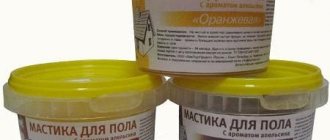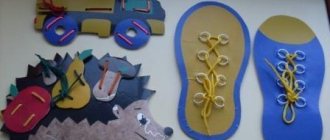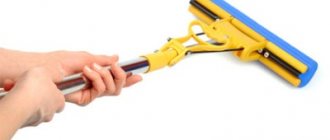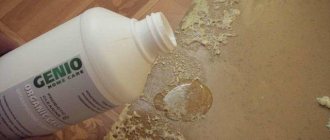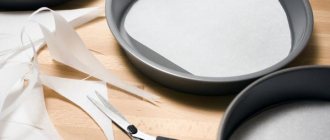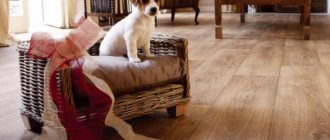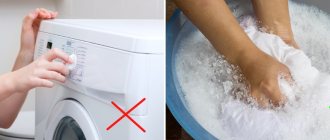Linoleum is practical, inexpensive, and easy to lay on the floor. A wide range of colors, patterns and even surface structure will allow you to choose such a coating for any room in the house. But most often we find it in the hallway and in the kitchen, that is, in the rooms where pollution appears most quickly. Even such durable material can quickly lose its attractive appearance, becoming covered with stains, cracks, scratches and abrasions. What to do to avoid this and extend the life of the linoleum coating will be discussed in this article.
A few words about linoleum and the features of its operation
The word "linoleum" comes from the Latin linum - linen, linen and oleum - oil. Nowadays, it is mainly made from polymer materials, practical and inexpensive, due to which it has many advantages:
- resistance to humidity, temperature, and many mechanical influences;
- ease of maintenance during operation;
- low price;
- ease of installation;
- durability;
- high heat and sound insulation properties.
Such a popular and versatile material could not go unnoticed by optimizers, and now there are several types of linoleum on the market, divided by manufacturing method.
- Natural linoleum is durable, wear-resistant, and environmentally friendly. It has fire resistance and antistatic properties. Located in a higher price position relative to other types.
- Polyvinyl chloride linoleum (PVC) is the most common and cheapest of all types, very practical and easy to maintain. The only disadvantage that can be noted is that at low temperatures it becomes brittle and loses its ductility.
- Glypthal or alkyd linoleum is inferior to PVC due to its greater fragility: cracks often appear on it. This type is not worth taking for the kitchen and hallway, but it is well suited for the bedroom.
- Linoleum relin, or rubber, is plastic and waterproof. It consists of two layers, the total thickness of which is from 3 to 6 mm.
- Colloxylin linoleum is made from nitrocellulose, which provides the coating with flexibility and moisture resistance, while at the same time imparting a characteristic shine. This type is not fire-resistant, so it has no place in the kitchen.
Linoleum is also divided into 2 types according to the presence or absence of a base. The coating without a base consists of several layers and is highly wear-resistant. There is a wide range of colors and patterns. The base material can be of two types:
- with a foam base - very flexible linoleum, with high durability, suitable for residential premises and has a large palette of colors and patterns;
- on a fabric (jute) basis - suitable for rooms where large crowds of people are not expected and good thermal insulation is required; the wear resistance of the coating depends on the thickness of the protective layer.
Can a steam mop be used to clean linoleum?
And now linoleum remains the most common floor covering due to a number of its own positive qualities. The market offers a wide selection of products that differ from each other in texture and color, which makes it possible to choose the coating option that will look perfect in the interior.
Plus, the material has good strength characteristics, it is moisture resistant, reliable and easy to maintain. Such a coating can be cleaned using a variety of means and devices, which are demonstrated in a wide selection at points of sale. Today we will tell you whether it is possible to wash linoleum
with a steam mop.
How does the indoor microclimate affect linoleum?
Linoleum flooring is so versatile that it can be installed in any room, be it an apartment, a cottage or outbuildings. The service life of the material and its appearance will directly depend on operating conditions, including temperature and humidity indoors, that is, its microclimate. These characteristics can vary greatly depending on the time of year.
- In premises intended for permanent residence (house, apartment), a constant level of humidity and temperature suitable for residents is usually maintained. It is also optimal for using linoleum. But in a country house or outbuilding, the temperature is almost the same as outside - hot in summer and cold in winter, and humidity does not depend on the forecasts of the Hydrometeorological Center. Under such conditions, linoleum either softens, then hardens and becomes brittle, which is why it quickly deteriorates and loses its qualities.
- A linoleum covering laid on a concrete or wooden floor, installed in accordance with all building regulations on top of a high-quality waterproofing layer, will last quite a long time. But if we are talking about a room with hastily put together flooring without hydro- and thermal insulation, then linoleum under such conditions will quickly lose its ductility and strength.
- The residential building maintains a high temperature during the cold season due to heating. This inevitably causes condensation to form. If it’s frosty outside, the excess moisture freezes out. But in warmer weather they concentrate indoors, especially on the floor. Linoleum accumulates moisture, causing it to fade, become vulnerable to mechanical damage, and begin to delaminate.
Application
The product is used in accordance with the instructions and technical specifications.
There is also a general algorithm suitable for any device:
- Disconnect the tank from the mop body. Fill the tank with clean filtered water. Then put the container in place.
- Put on the appropriate attachment for the type of surface.
- Turn on the device and wait for steam to dispense.
- Regulation of steam supply intensity.
- Start tidying up.
Do not stay in place for a long time, so as not to damage the surface with high temperature. Start cleaning from the corners of the far rooms and move towards the center. When cleaning the carpet, use the nozzle to create several wide parallel stripes. Start washing windows from top to bottom in small stripes.
The main enemies of linoleum
First of all, let’s figure out what products cause damage to linoleum and put them away.
- Do not use hot water to clean the floor. Of course, it copes with dirt more easily, but in addition, it causes swelling of the linoleum.
- Baking soda is great for cleaning surfaces, but not for linoleum. The alkali included in its composition creates microcracks on the surface, which expand over time and accumulate dirt.
- Any abrasive products - washing or cleaning powders - cause scratches on the surface.
- Do not use bleaches (especially chlorine-containing ones) and solvents. They discolor the pattern and can even corrode the linoleum to the base.
If you have difficult-to-clean stains on your flooring, it’s best to use the tips below.
Learn how to properly care for linoleum
Wet cleaning is a necessary step to keep your home clean. And although linoleum does not require such careful handling as some floor coverings, there are certain rules for cleaning it.
- To wash linoleum, use only soft cloths. Hard material will leave scratches on the coating. After washing the floor, either throw away the used rag or wash, rinse and dry thoroughly. But it’s better to take a new one.
- For daily wet cleaning of floors without heavy soiling, wipe them with a cloth soaked in warm water. Weekly cleaning requires great care: use a soap solution to wash linoleum - grate 100 g of laundry soap and dissolve in slightly warm water.
- For severe stains, use a solution of liquid soap and vodka. For 1 liter of water you will need 1 tsp. liquid soap and 200 ml of vodka. Wash the floor with this solution, wipe very dirty areas especially thoroughly, and then rinse with clean water and wipe dry.
- The cheapest and easiest way to clean linoleum is water with vinegar (1 glass per bucket of water). Use it for daily cleaning of the area where food is prepared and eaten. In other rooms, wash the floor once a week. This method will save you from stains on the floor.
- The only thing cheaper than vinegar is the water in which you boiled the potatoes. Just remember that it must cool to room temperature.
- If you spill wax on the linoleum, carefully remove it with a scraper. Wipe the remaining stain with gasoline and immediately wash the floor with warm water.
- If there are a lot of grass marks on the linoleum in the hallway, wipe them down with water and a little bleach. Immediately after this, blot the treated area with a napkin well soaked in lemon juice.
Which mop is best to use?
The mop is very convenient to use when cleaning floors. But since linoleum can be easily scratched, you should carefully consider the choice of this device.
- There should be no protruding hard elements on the cleaning surface of the mop that could cause scratches. Ideally, it should be covered with a rubber gasket or a layer of soft cloth.
- It is advisable to get two mops: wide and narrow. With the first one you can easily clean large rooms, and the second one is useful for cleaning narrow spaces and hard-to-reach places.
- PVA mops have now become very popular, combining ease of use and thoroughness in removing dirt. A hard foam sponge is attached to their washing surface, which when interacting with water becomes soft and does not scratch the surface. The mop is also equipped with a spin mechanism, which means you no longer have to bend over and get your hands dirty.
- If you have linoleum with an anti-slip coating, we recommend using a model with plastic bristles. It perfectly removes dirt, but does not harm the coating. It is better if the mop has a non-retractable handle so that you don’t have to put extra pressure on it when cleaning.
How to get rid of a specific odor
The unpleasant odor of new linoleum is caused by the substances used in its manufacture. They are released from the pores open along the cut line, mixing with air molecules. The sensation is not the most pleasant, but usually the smell disappears on its own after about a week. This process can be sped up if you don't have time to wait.
- Unroll a roll of new linoleum and place it on the floor with the backing facing up. After 2-3 days the smell should disappear completely. This method has another advantage: the linoleum sheet will straighten, soften, and it will be much easier for you to lay it.
- If the linoleum has already been laid, light a few candles in the room. Chemical compounds that emit an unpleasant odor quickly burn in an open fire.
- Take regular table vinegar and treat the linoleum sections with it. After this, dilute it in water (1-2 glasses per bucket of water) and wash the entire floor. Non-aggressive acid neutralizes unpleasant odors. Don't forget to ventilate the room after treatment.
How to wash linoleum to make it shine
Over time, your flooring may become dull, even if you wet-clean it daily. But I really want the linoleum to shine like new. You can return it to its former freshness and radiance using the recommendations.
- Before washing linoleum, thoroughly sweep the floor with a broom or vacuum. This will remove sand and dust, which, when washed, will leave streaks and small scratches that are clearly visible on a smooth surface.
- Change the water as often as possible, especially if the floor is dirty. Otherwise, you will simply smear the dirt without achieving shine.
- Floor cleaning liquids are easy to find in hardware stores. Among them there are those that are designed specifically for linoleum. They contain surfactants that clean and gently polish the coating.
- You can use a simple folk recipe. Dilute milk with cold water in a 1:1 ratio and wipe the floor with this solution. Afterwards, go over again with a cloth soaked in clean water.
- You can achieve the shine of linoleum by rubbing it with linseed oil or drying oil, using woolen cloth. After treatment, polish the polished area thoroughly with a piece of silk. But this method is dangerous, since the floor will be very slippery.
Video tutorial: how to renew tarnished linoleum
How to clean linoleum in the kitchen
The kitchen is the most visited place in the apartment. And due to the specifics of the room, the floors in it are most often contaminated. Contamination can be caused by:
- tea and coffee;
- fat;
- spilled sugary drinks;
- juices
In addition, you can leave black streaks with your shoes or spill iodine on the floor while treating a cut. And if children like to hang out in the kitchen, then the linoleum will turn into a canvas for a future work of art, and you will have to wipe off traces of ink and felt-tip pens.
- Old stains from coffee or tea, if they are in an inconspicuous area, are best left untouched. But if they are in a visible place, you will have to remove them using gasoline or kerosene. Wipe stains very carefully as these substances are harmful to the finish. Try not to go beyond the dirt to prevent a faded stain.
- If you didn't wipe away greasy food stains immediately, ammonia will help get rid of them.
- You can also use dishwashing detergent. Dilute a very small amount of the substance in water (1-2 tablespoons per bucket) and wash the entire floor. This will help you get rid of both oily and sugary juice and soda stains. There is no need to overdo it so that you don’t have to deal with washing away soap stains later.
- Black streaks from shoes can be easily wiped off with a regular eraser.
- Wipe iodine stains with camphor alcohol until they disappear completely.
- Only fine sandpaper can remove ink and felt-tip pen from linoleum. Gently rub it onto the stain without going beyond it. When the dirt disappears, polish the treated area with a piece of wool cloth.
Note! Whatever product you use, first test it on a small, inconspicuous area. If the surface deteriorates during processing, it will not be noticeable.
Cleaning the floor after renovation
Preventing trouble is often easier than correcting its consequences. Before you start renovating a room with linoleum, cover the entire floor with newspaper. This way you will protect yourself from subsequent lengthy and labor-intensive cleaning. But if the renovation has already been completed and there are piles of garbage on the linoleum-covered floor, start with dry cleaning.
- Carefully remove all construction debris and sweep the floor with a broom. Just in case, you can also use a vacuum cleaner. Now wash the floor with clean water, and then with water with a few drops of vinegar or potassium permanganate.
- After repairs, foam may remain on the floor. It sticks to linoleum no worse than to other surfaces. Take a very sharp knife and scrape off the foam, only very carefully so as not to damage the floor covering. Place a rag soaked in water on the remaining stain and leave for at least a day or overnight. During this time, the foam should soak. Better yet, immediately, while the stain is still fresh, use a special solution for removing polyurethane foam. You can buy it at a hardware store. After using it, thoroughly wipe the linoleum with a damp, clean cloth.
- Wipe off the paint that often remains on the floor after repairs with nail polish remover. The same applies to nail polish, which constantly tends to spill on the linoleum. Remove the stain carefully so that the liquid does not interact with the coating for too long, then wipe the treated area with a damp, clean cloth.
- A solution of bleach in a large amount of water (literally 50 g of the substance per bucket) will help you get rid of rust and mold. If you are afraid of the aggressive effects of bleach on linoleum, use lemon juice. Dampen a clean rag in it and wipe off the dirt until it disappears completely.
- Any glue that gets on linoleum must be wiped off immediately. To remove a dried stain, you will have to use gasoline or white spirit. Use these products carefully to avoid rubbing the top layer of linoleum to the point of discoloration, and wash the area with clean water after treatment.
Can I use a steam mop (steam cleaner)
When cleaning linoleum, a steam cleaner can become indispensable because it is very convenient. To prevent steam from damaging the surface of the linoleum, you need to lower its temperature by moving the steam regulator to position 2 or 3. Some models are equipped with special attachments, including a mop. It will help you clean hard-to-reach places: under the bed, behind cabinets, in corners.
Note! Washing vacuum cleaners are also great for cleaning linoleum. But before you start work, make sure the integrity of the floor covering and the tightness of the joints. Otherwise, water will get under the linoleum and cause it to swell and cause a lot of problems with the floor.
By the way, if you have ribbed or porous linoleum on the floor, then you literally need a steam cleaner or a washing vacuum cleaner with this function. Experience shows that washing this type of coating with water is useless. Dirt gets firmly clogged into the pores and hollows.
Some housewives use products to clean stoves or wash floors, applying them for 5–10 minutes and then scrubbing with a brush. This is a very long and labor-intensive process. If you decide to lay linoleum with a non-standard coating, it is better to immediately take care of purchasing a steam generator or a washing vacuum cleaner, which will save you a lot of time and effort. Remember that these types of linoleum get dirty quite quickly, and if in living rooms 1 cleaning per week may be enough, then in the hallway and in the kitchen you will have to wash the floor daily.
Video: how to wash linoleum
Typical damage to linoleum and how to fix it yourself
Perhaps the most common damage to linoleum is cracks. While they are small, they can be covered with a chair or a small rug, in general, making them invisible. But if a crack has already appeared, it will certainly grow over time, and it will have to be patched.
- Increase its length by cutting just a couple of centimeters from both edges with a sharp knife.
- Gently clean out any debris that has accumulated inside.
- Treat the sections with alcohol to degrease.
- Apply glue to the inside (this can be Moment or special glue for linoleum).
- Place the coating firmly on the floor, press it down with something heavy and leave for 1–2 hours.
- After this, remove any remaining glue from the surface.
If the linoleum is torn, you need to replace the damaged area.
- Cut out an even square where the hole appeared.
- Try to select a piece of new linoleum so that the pattern completely matches.
- Remove all debris and degrease the surface with alcohol.
- Apply glue to a piece of linoleum, especially on the edges, and apply it to the floor. The joints must match completely.
Often linoleum fades and becomes stained. This is usually caused by high humidity. For example, you may notice such changes near the sink or in the area where your pet's water bowl sits. Honestly, it’s easier to prevent such damage by wiping the floor with a dry cloth in a timely manner. But if trouble has already happened, try washing the linoleum in the entire room with soap or vinegar solution. The whitish and yellow spots will fade and become less noticeable.
Prevention and protection from mechanical damage
To extend the life of linoleum, you need to properly care for it. And you should start from the very moment you laid this covering on the floor.
- There are special polishes, mastics and waxes for linoleum. They create a protective film on the surface that prevents fading, minor mechanical damage and dust settling. Such products should be applied to the linoleum immediately after it has been laid. It is advisable to repeat the procedure every 3 months.
- Heavy furniture brings a lot of trouble, pushing linoleum to the holes. Light objects - tables, chairs - are also not far behind: due to frequent moving from place to place, they leave scratches on the surface. Before placing furniture in a room with linoleum on the floor, stick pieces of felt on the legs. It significantly softens the mechanical impact of the object on the surface, and even polishes it when moving.
- Due to sunlight, the colors of linoleum and the design on it can fade greatly. In rooms facing the sun, try to keep the curtains closed during the day.
Linoleum is a great invention. But it also requires some care. We hope our tips will convince you that washing linoleum and keeping it clean and fresh in the future is not at all difficult. Now cleaning activities will take you a minimum of time and effort.
legkovmeste.ru
Daily care of linoleum
Linoleum is the most affordable flooring. Despite this, it is best to understand how to care for linoleum in order to extend its service life. There are several ways to care for your flooring. In this case, it is best for the housewife to decide which methods to use. Some prefer traditional methods, while others prefer special means.
Home Remedies
The most common problem with linoleum is scratches. It's best to get rid of them right away. The best folk remedy is flaxseed oil. The product must be applied with a sponge and then rubbed with a soft cloth until the coating is dry.
It is recommended to wash the floor covering with soapy water. This procedure will eliminate minor defects and also add a slight shine. It should be remembered that the solution should not be hot. It is best to clean the flooring every day.
Special means
Every housewife should know how to clean linoleum. Such knowledge will extend the life of the floor covering. It is best to use the following substances for preventive purposes:
- Mellerud;
- footlogix;
- Centralin "Laminat Pflege";
- Emsal.
How to clean linoleum from dirt
With the arrival of spring or autumn, the street becomes too dirty. All dirt, along with shoes, is transferred into the house. After several trips outside, dirty spots appear on the floor. That is why housewives rush to wash away all the dirt in order to return the floor covering to its original appearance. You can get rid of pollution using traditional methods. If you don’t want to prepare solutions with your own hands, then you can purchase cleaning products in the household chemicals department.
Home Remedies
Almost every housewife wants to know how to wash linoleum to make it shine. This means that first of all you need to get rid of contaminants. A good solution can be considered a solution in which 1 spoon of detergent is mixed, 200 g. vodka and water. Just rub the stain a little with a rag or sponge, and the floor will be like new again.
Another effective remedy is a solution of milk and warm water. It is necessary to mix the component in a ratio of 1 to 1. After treatment with such a solution, the stain must be disinfected. This can be done using vinegar.
Before cleaning linoleum, you should remember that only local contamination can be removed using such folk methods. The entire coating cannot be washed with such solutions.
In addition, it is best not to use the same polish too often.
Special means
If local contamination appears, it is best to use a special linoleum cleaner, which can be purchased at household chemicals departments. The problem that has arisen can be dealt with using a product such as Mellerud. There are several types of this substance. Each type of product is capable of removing certain types of contaminants.
It is enough to apply the product to the dirt, and then rub everything with a thin cloth. It is important to rub until the linoleum dries. If desired, you can use another linoleum detergent. The main thing is that it helps.
What to wash with
When choosing cleaning products for linoleum, you need to know that not all of them are suitable for such a coating. The thing is that the front layer of the product is highly sensitive to the action of alkalis and acids, so for care it is recommended to select gentle compositions that are diluted with water. So. Before purchasing a cleaning product, carefully read the instructions for its use.
Detergent for cleaning work
If you want to simplify cleaning, a vacuum cleaner with detergent properties for linoleum with a steam cleaner will help you with this option. Equipment of this kind has proven itself to be excellent in cleaning many floor coverings, including linoleum. Use this device to clean linoleum
- sheer pleasure.
All you need to do is fill the reservoir with water, plug in the cord, put on the necessary attachment and run the mop over the floor .
mop is also great for cleaning linoleum.
.
The working principle is simple, it produces steam that can clean even the heaviest stains on the floor. Plus, during cleaning, the coating is also disinfected. And since linoleum is not afraid of the influence of moisture, you can clean it with a device with a steam cleaner every day and not be afraid that the appearance of the flooring will suffer from such cleaning.
Using a right mop is also convenient because there is no need to use chemical-based compounds to clean the floor. She will clean the floor of dirt even without them. Attention! Before cleaning the floor with a steam mop, first test its effect on a small area of linoleum. If no changes occur to the material, then you can continue cleaning the entire floor.
Steam Mop
A steam mop is distinguished by its convenience and maneuverability, which makes it possible to clean even in places that are difficult to reach. It has a gentle and soft effect on linoleum, so you don’t have to worry about the surface of such a coating breaking.
How to clean linoleum after renovation
Every year, people make cosmetic renovations to their living space. In the process of carrying out repair work, the floor covering becomes very dirty. Sometimes it is impossible to wash it even at home. It is best not to rush and do everything step by step.
First of all, the housewife should get rid of large pieces of dirt and dust. To do this, it is best to use a brush and vacuum cleaner. After this, you need to get rid of the lime that has fallen on the floor. To do this, it is best to rinse everything with a damp cloth. If there are traces of paint on the floor covering, it is best to use a knife or blade.
In the next step, you can move on to wet cleaning. In this regard, the question arises: how to wash linoleum after repair so that no traces remain? It is best to prepare a solution of water and bleach. It is important to mix the components in proportions of 10 to 1. For severe stains, you can add a little lemon juice. Such a solution will not only clean, but also renew old linoleum.
The essence of treating laminate flooring with a steam mop
The principle of treating laminate flooring with a steam cleaner includes several rules. It is important to know that this is one of the most durable coatings, which still requires special care:
- Can I clean laminate flooring with a steam mop? Cleaning can only be done if the floor surface is water-resistant and the laminate seams are protected with sealant.
- For washing, you should use only special products in small quantities. It is better not to resort to chemical cleaning solutions at all.
- Cleaning will ruin laminate flooring if done every day. Therefore, 1-2 times a week is enough.
- The temperature scale should be at the lower limit.
- To prevent the laminate from deteriorating quickly, steam should not be released frequently, but periodically.
Following the recommendations will help maintain the floor's original brilliant appearance.
To make linoleum shine
Every housewife should know how to wash linoleum to make it shine. Shine will give a feeling of newness. In fact, making your flooring shine again is not as difficult as it might seem at first glance.
A good way to make linoleum shine is regular potatoes. A decoction must be prepared from the tubers of this root vegetable. When the broth is ready, you need to add floor cleaning liquid to it. This polish will make any surface shine.
Another great way to add shine is vegetable oil. Polishing linoleum with such a product will not cause any difficulties. Oil is added to water and then the floor is washed. The only drawback of the method is that it is only suitable for expensive coatings . If this is not taken into account, the coating may be damaged.
How to remove grease from linoleum
Sometimes housewives are interested in the question of how to clean linoleum in the kitchen? During the cooking process, grease may drip onto the floor, which is not so easy to get rid of. Some stains are so ingrained that they cannot be removed. To prevent this from happening, you need to understand how to properly wash linoleum. The housewife should decide which means to use: folk or professional.
Home Remedies
In order not to run anywhere, it is recommended to use traditional methods. Before you begin removing a grease stain, you need to use a paper towel to remove any drops of grease that have not yet been absorbed. After this, you need to decide what to wash the linoleum with to make it shine.
Many housewives use warm water and detergent. In most cases, the method allows you to get rid of greasy stains. If the contamination still remains, you need to use turpentine.
It should be noted that this substance can affect linoleum, so that it will be difficult for it to recover, so it must be used with caution.
Special means
Professional products allow you to quickly deal with stains, which is why you need to figure out how to clean linoleum in the kitchen. Despite the huge number of professional products, not every substance can cope with fat.
It is best to turn your attention to products such as Mellerud, Loba and Longlife. As for the instructions for use, they are described on the back of the container.
The benefits of using a steam mop for cleaning linoleum
It should be stated right away that this is a professional-level tool that cleans various surfaces with hot steam. The advantages of cleaning linoleum using such a device are undeniable:
- In addition to washing, the linoleum surface is disinfected and bad odors are removed.
- With the help of steam, even very stubborn dirt is removed from the surface of the coating.
- To clean linoleum, you do not need to regularly purchase expensive cleaning products.
- Such a tool eliminates dust, so it is recommended for cleaning houses where there are allergy sufferers, because household chemicals are not required for cleaning - this is another plus for sensitive respiratory tracts.
- the floor covering easier .
- Removes grease stains from floor surfaces.
If you are thinking of purchasing a steam mop, then you need to know that not all floor coverings can be cleaned with it. It cannot be used if the coating was laid using the adhesive method, but for marble, linoleum, ceramic tiles and wood floors, such a device would be a suitable option. You will learn how to clean with such a device from this video:
My linoleum | how to clean linoleum | I give advice | #mylinoleum #edblack
Source
Is it possible to wash linoleum with a steam cleaner?
How to clean linoleum so that there are no marks left on it? It's simple: you can use folk or professional remedies. Sometimes there are times when you need to quickly deal with dirt on the floor. What to do in this situation? You must use a steam cleaner.
Some housewives believe that it is best not to use such a device for cleaning the floor covering, since it will not be able to refresh it, but will only harm it. Actually this is not true. Steam cleaners are used for all types of surfaces. The only thing you should remember is to follow the rules for using the device. If everything is done correctly, you will no longer have to think about how to wash linoleum, since it will always be clean.
What to wash with
When choosing detergents for linoleum, you should know that not all of them are suitable for such a coating. The fact is that the top layer of the product is highly sensitive to the effects of alkalis and acids, so for care it is recommended to choose gentle compositions that are diluted with water. So. Before purchasing a detergent, carefully read the instructions for its use.
Detergent
If you want to make cleaning easier, a linoleum vacuum cleaner with a steam cleaner will help you. Such equipment has proven itself in cleaning many floor coverings, including linoleum. Cleaning linoleum with this device is a pleasure. All you need to do is fill the reservoir with water, plug in the cord, put on the desired attachment and run the mop over the surface of the floor covering.
A steam mop also cleans linoleum well. The principle of operation is simple, it generates steam that can clean even the most difficult dirt on the floor. In addition, during cleaning, the coating is also disinfected. And since linoleum is not afraid of exposure to moisture, you can clean it with a device with a steam cleaner at least every day and not be afraid that such cleaning will damage the appearance of the flooring. The use of a right mop is also convenient because it does not require the use of chemical compounds to clean the floor. It will clean the floor surface from dirt even without them.
Attention! Before cleaning your floors with a steam mop, first try it on a small area of linoleum. If no changes occur with the material, then you can continue cleaning the entire floor.
Steam mop The steam mop is convenient and maneuverable, which allows you to clean even in hard-to-reach places. It has a gentle and soft effect on linoleum, so you don’t have to worry about the surface of such a coating being damaged.
How to update the look of linoleum
Over time, any floor covering loses its original appearance. That is why housewives should know how to restore linoleum, spending as little effort and money as possible.
Before updating the covering, you need to understand what flooring material is in the room: natural or artificial.
Restoring linoleum takes some time. Natural linoleum can be treated with mastic and woolen fabric. A polish like this can make your flooring shine again.
As for artificial material, restorative procedures can be carried out using means such as Cif or Silit. The polish should be applied until the coating becomes the same as when purchased. Besides, don’t be afraid to experiment - and then the house will always be clean.
dombrat.ru
What can be cleaned with a steam cleaner?
Typically, such equipment is purchased for a specific type of cleaning, but steam cleaners have much more possibilities for use. They can treat surfaces made of any material and are capable of deep cleaning.
Here are some of the areas of application of devices of this type:
- Cleans batteries and radiators well.
- Clean tiles, glass, mirror surfaces.
- Remove old grease from dishes.
- Get rid of unpleasant odor on clothes.
- Clean upholstered furniture and carpets.
- Capable of cleaning the entire interior of the car, as well as wheel rims and even the engine.
- Cleans dirt from gas and electric stoves and ovens.
- Removes allergens and mites from bedding and mattresses.
- Cleans washable, moisture-resistant wallpaper from any dirt.
- Renews soft children's toys.
- Cleans all kitchen surfaces well, including the hood.
- Cleans floors made of any materials: tiles, granite, linoleum, parquet.
- Helps in cleaning hard-to-reach places in the apartment.
- Irons clothes with the right attachment.
- Removes animal hair and hair from any surface.
- Cleans the interior surfaces of refrigerators and microwave ovens.
How does a steam cleaner work?
The device consists of the following elements: a water container, a heater, a hose, nozzles and a “gun”. Before starting cleaning, water is poured into the steam cleaner. After turning on, the water turns into a gaseous state and comes out of the hose under strong pressure. The steam jet penetrates into the smallest particles of contaminants and destroys them from the inside. The device operates silently, and the steam is safe for humans, as it has a loose structure.
Preparing to use a steam cleaner
Regardless of what surface you are going to clean, the preparation is the same. It consists of the following:
- Choose a suitable time to work.
- Clean the surface to be treated from unnecessary objects.
- Pour the required amount of cleaning solution into the machine.
Steam generator - what kind of “beast” is this?
A steamer, steam generator or steam cleaner are devices that not only clean, but also disinfect various surfaces during processing. They must work without making uncomfortable noise, be safe when used correctly, and most importantly cope with dangerous and harmful dust mites. What does a steam cleaner consist of? It has several main elements:
- Main tank;
- Button to turn on the device;
- Flexible hose;
- Various attachments for additional functions.
Source
How to use a steam cleaner to clean carpet?
To remove stains from the carpet, follow these step-by-step instructions:
- Start working from the farthest place from the door.
- Use all the detergent after going over the carpet a sufficient number of times.
- Remove the product with water.
- Dry the carpet with a vacuum cleaner.
Important! How often do you have to take your carpet to the dry cleaner? You may want to consider purchasing a steam cleaner so that you can provide quality carpet cleaning at home at any time. Information from our review “How much does it cost to dry clean a carpet?” will help you decide whether or not to buy this device.
Cleaning clothes
This process can be carried out without even removing clothes from hangers. A special attachment will collect hair, threads, and lint from the material. After steam treatment, things will look ironed, fresh, without foreign odors.
When cleaning fur products, the nozzle should be kept at a considerable distance: the steam jet should only lightly touch the surface, without penetrating deeper. This will allow you to clean the pile efficiently and provide volume to the fur.
The same applies to down jackets. Keep the steam cleaner nozzle at a distance of at least 30 cm from the jacket. This condition is mandatory, since down does not tolerate high temperatures.
Today, all steam cleaners can be divided into three groups.
- Manual. This device is characterized by a fairly compact size and is easy to use.
- Compact. It is presented in the form of a small vacuum cleaner, which has medium dimensions. The unit is easy to use, does not take up much storage space and copes with its main task perfectly.
- Steam vacuum cleaner. This is a very powerful device, which is distinguished by its rather large dimensions, high power and provides excellent results. It is worth noting that this unit will require a separate storage space.
How to clean furniture with a steam cleaner?
To clean upholstered furniture, toys and mattresses, use a steam cleaner as follows:
- Point the nozzle of the device at an angle, as if blowing dirt onto a rag.
- After treatment, wipe the wet area with a dry microfiber cloth.
Note: treat upholstered furniture even if there is no obvious contamination. It destroys invisible microorganisms and bacteria that inevitably “start up” in sofas, for example, dust mites.
Cleaning upholstered furniture
It is recommended to clean the sofa and other furniture even if there are no signs of obvious contamination. In this case, the surface is treated, microorganisms are destroyed, for example, dust mites, moth larvae.
- Prepare microfiber cloths. You will need several of them.
- Fill the tank with water, preferably distilled.
- Check the interaction between the material and the steam cleaner. Treat a small piece of the sofa to prevent damage to the upholstery.
- Clean the surface of the furniture in small areas. As soon as you have steamed one area, immediately collect the softened dirt with a dry cloth. Microfiber perfectly absorbs moisture and dirt.
To clean a specific stain, you need to point the nozzle at an angle to the surface, trying to blow away the dirt.
How else to use a steam cleaner?
Limescale deposits can be removed from any surface using a steam cleaner as follows:
- Pre-treat the plaque with vinegar.
- Point the nozzle directly at the dirt.
- Remove deposits.
- Dry.
Important! Follow the link and learn in detail about how to clean the bathtub from limescale.
To effectively remove grease from any surface, follow this action plan:
- Attach the brush attachment.
- In addition to the water in the container, prepare another solution in any convenient container.
- Pour water into a plate and add dish detergent.
- Periodically dip the nozzle into the soapy solution.
- Get rid of any surface fat.
Note: Do not put dish soap into the steam cleaner!
To clean radiator grilles and batteries, do this:
- Remove the nozzle.
- Treat hard-to-reach areas.
- Turn on the battery to dry.
A steam cleaner can be used to remove tape residue from furniture. Simply steam the dirt with the device and wipe with a dry cloth.
To clean stains on wallpaper, follow these recommendations:
- Make sure the wallpaper is moisture resistant.
- Use the appropriate attachment.
- Direct the steam jet at a slight angle.
- Remove any remaining stain with a dry cloth.
Here's how to care for clothes and curtains using a steam cleaner:
- Put on the required attachment.
- Hang clothes on hangers and curtains on the curtain rod.
- Direct a stream of steam onto the fabric.
- Treat the surface so that the steam moves parallel to the fabric.
- Leave to dry.
Tile
The main problem with tiles is soap and limescale deposits. A steam cleaner allows you to get rid of dirt without damaging the tile surface. To work, use a point nozzle, which is brought close to the coating and moved slowly, waiting for the plaque to completely dissolve. If the deposits have hardened, it is necessary to further treat the problem areas with a brush. The combination of intensive wiping and constant steam allows you to remove even old, dried plaque. The napkin in the nozzle is changed as needed. It is recommended to periodically treat the tiles with steam to prevent repeated deposits.
